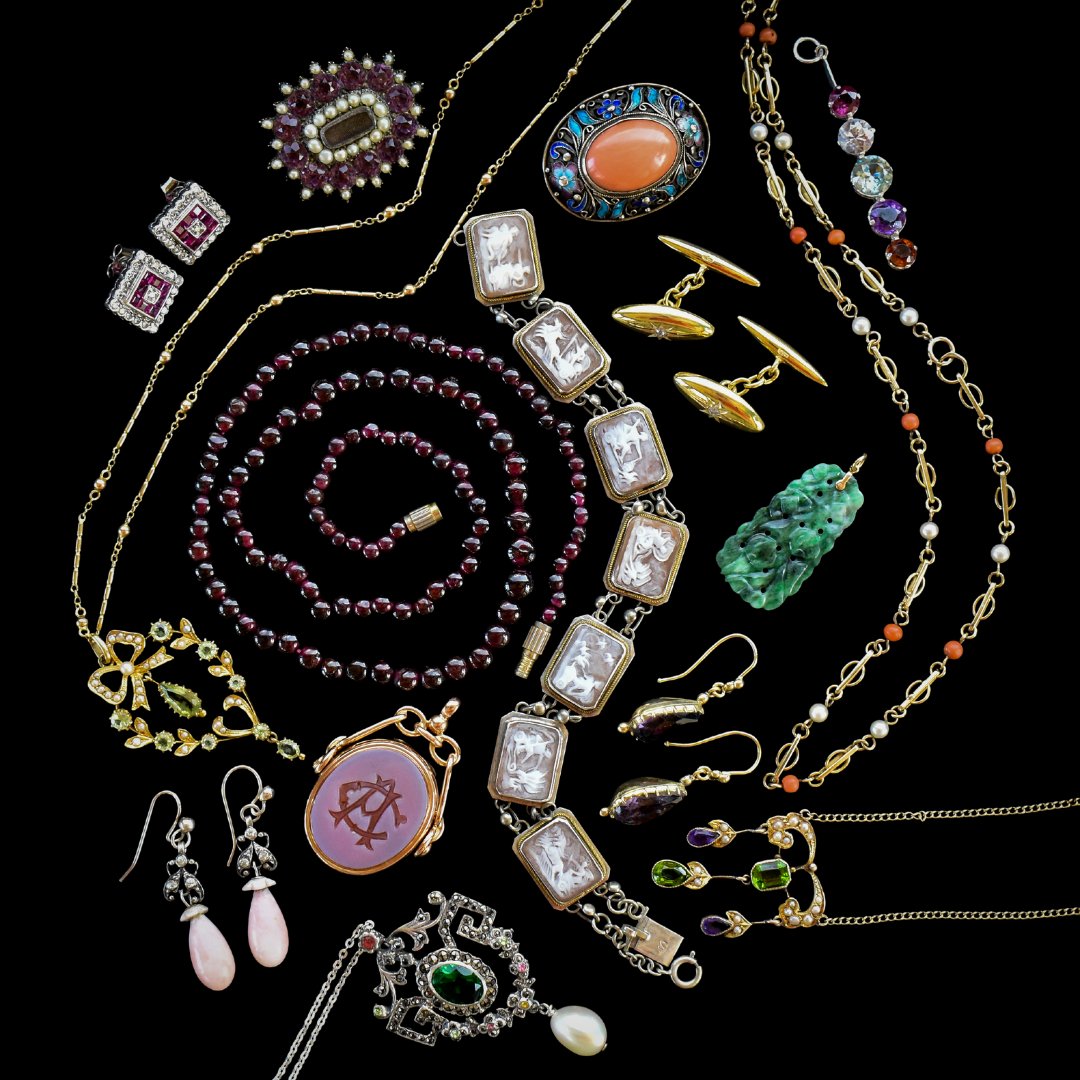Emerald, the May birthstone, is associated with the Zodiac sign Taurus. Emeralds offer the perfect dazzling colour for Spring and are also a symbol of rebirth and love. As the gem of Venus, it is also considered to aid in fertility. It is believed to grant the owner foresight, good fortune, and youth.
What makes this gemstone different?
Large Emeralds are very rare, particularly, those of good colour. One of the biggest found in the early 19th century in Columbia, was the ‘Devonshire’, which weighed 1383.95 carats uncut.
"Only in Colombia are the rare trapiche emeralds found. These gems have dark impurities that form a hexagonal core in the stone, with lines sometimes running from the centre of the stone to the outer edges, making them look like spokes or wheels." - Gatsby Jewellery.
Emerald has a good hardness of 7.5 to 8 on the Moh’s scale, which makes it appropriate for rings and jewellery, but the gem can be brittle, and can make cutting, setting and cleaning rather difficult. Even for a skilled gem cutter, cutting emeralds presents a challenge because of the inclusions.
Source - GIA.
The emerald cut, a rectangular or square cut with bevelled corners that brings out the beauty of the gem and at the same time protects it from mechanical strain. Giving an emerald a square cut emphasizes the richness of color by leading the eye into it rather than deflecting attention away from it. Depending on the nature of the inclusions, emerald may also be cut into gently rounded cabochons or beads.
The Worlds 4 Most Priceless Emeralds
The famous Istanbul dagger contains four of the worlds most priceless Emeralds. The dagger has a huge Emerald in its handle. In Islam Emeralds were highly exotic. The main upper and lower Emeralds are pear shaped whilst the middle one has a rectangular cushion cut. Another octagonal Emerald on top of the handle lifts to reveal a watch. The handle and sheath consists of gold set with Diamonds, enamel and mother of pearl decoration.
It was made in Istanbul in the 18th century by the royal craftsmen of the Ottoman ruler, Sultan Mahmud I. It is now preserved and publicly displayed at the treasury of the Topkapi Palace Museum, in Turkey.
The origin of the Emerald stems back all the way to ancient Egyptian times. It is said that the oldest emeralds are about 2.9 billion years old! Ancient Egyptian civilisations regarded emeralds as a symbol of life and fertility which was why mummies were often buried wearing an Emerald carved with the symbol of verdure, on their necks to symbolise eternal youth.








